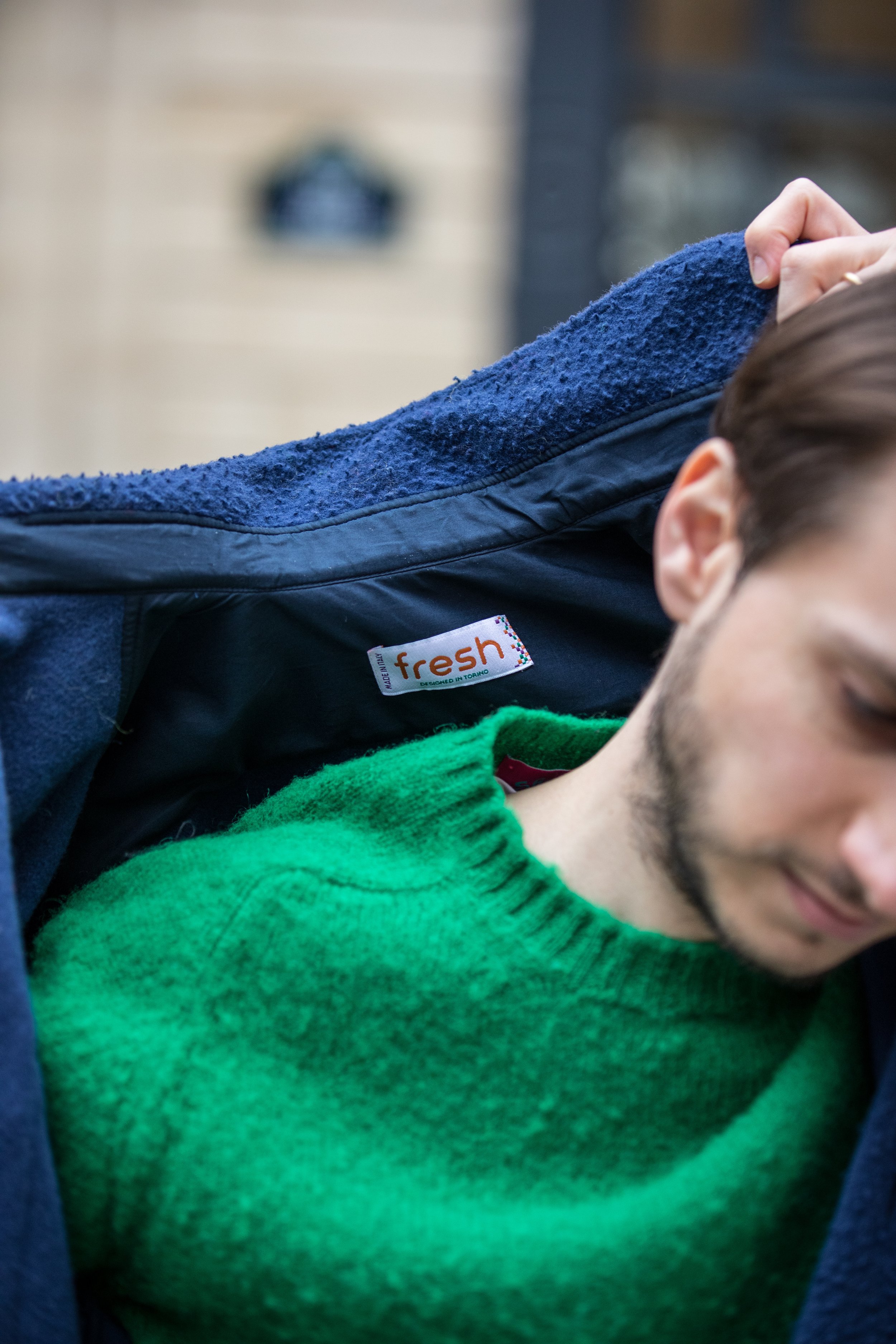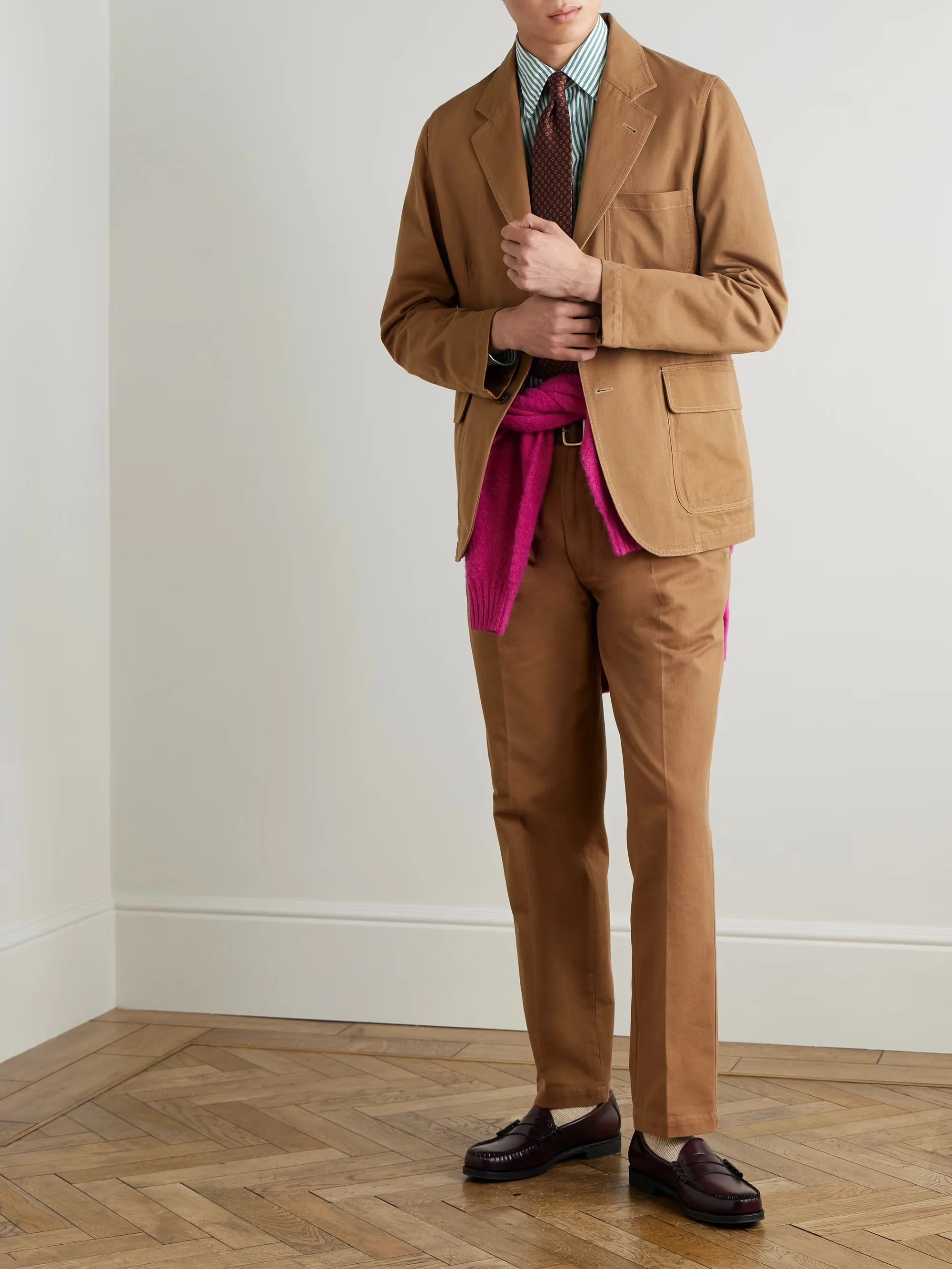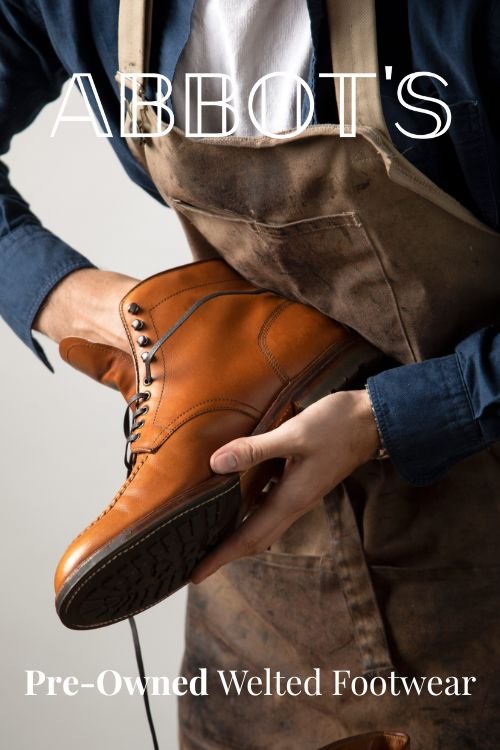Fresh Torino - The Casentino wool overshirt made in Italy
/Fresh Torino
The Casentino wool overshirt made in Italy
In 1998, the American entrepreneur Senh Duong founded the Rotten Tomatoes website, which aims to establish a ranking of films validated by critics and viewers. The best films are awarded a "certified fresh" label, those less good "rotten". This is how The Wizard of Oz (1939) and Citizen Kane (1941) regularly compete for the top spot of the best movie of all time. The idea of having a "tomato meter" comes from the vaudeville plays of the early 20th century, in which the audience used to throw tomatoes at the actors to show their displeasure with the quality of their performance. The word "fresh" captures quality and novelty. It was therefore logical that the Turin-based store Fresh Torino would adopt this label. This Piedmontese store was founded in 2007 by two enthusiasts, Giulio Carbone and Alessio Massa, who could not find quality clothing from niche brands. At Fresh Torino, you will find Japanese brands such as Beams Plus or Orslow but also exclusive collaborations such as the one realized in partnership with the American brand Crescent Down Works. In a world dominated by multinationals and mass market transaction, the rationalization operated by Fresh Torino is welcome. The physical store is doubled with a digital presence and recently Alessio and Giulio launched Fresh, a brand that reflects their image.
We are pleased to introduce the Fresh blue Casentino wool overshirt.
Let's have a closer look.
The age-old history of Panno Casentino
The wool tradition of Panno Casentino has its origins in the Middle Ages in the town of Stia. The climatic and orographic conditions of the territory have forever linked this area to textile production since the 13th century. Sheep farming, already present in Etruscan and Roman times, became a predominant activity during the 15th century due to high demand. At the same time, the craft of the “orbace”, a woolen fabric used in Sardinia in particular, took off but remained confined to a limited market due to the constraints imposed by the Republic of Florence.
The birth of the first Panno Casentino is attested in 1537: the success of this new product was staggering. The characteristics of roughness and compactness immediately appealed to the working classes who, especially in the case of shepherds, merchants and carters, needed weatherproof coats for prolonged use. Despite the significant roughness of the finished products, this fabric eventually intimidated some far-sighted Florentine officials, who understood its commercial potential thanks to its competitive prices. In 1616, a law by Cosimo II limited the sale of Casentino to the production areas only, effectively preventing its export outside the valley.
Despite the corporative uprising in the face of the Florentine sovereigns' adversity, during the 16th and 17th centuries the wool craftsmen continued to spread in Stia as well as in the entire valley. Over time, the growing demand was met by the transformation of the textile factories into industrial centers. In the middle of the 19th century, the first woolen mills began to operate. In fact, first Stia in 1830 and Soci in 1848, then Rassina and Pratovecchio, all became important factories, employing hundreds of inhabitants. During this phase of development, the fabric was refined and became warmer and lighter.
Thanks to the innovative practice of "rattinatura" - the process of scraping the wool giving it its typical brushed look - Casentino acquired a very characteristic and unique appeal.
From the mid-19th century onwards, new colors appeared, such as green, orange and red, these very vivid tones are absolutely characteristic of this wool.
The Fresh overshirt in navy blue wool casentino
Casentino wool has always fascinated me. Colorful, wearable and warm, I had never tried a garment on. So when I discovered the casentino wool overshirt from Fresh, I was very happy to give it a test run.
The Turin-based brand's Casentino comes from the leading Stia-based manufacturer TACS, founded in 1976. If you want to know more about how this Tuscan wool is made, check out this very detailed video from the manufacturer.
The overshirt has two chest pockets with flaps, 7 real mother of pearl front buttons, shirt cuffs and two hidden side pockets. The deep blue catches the light beautifully. The piece is fully unlined.
The Fresh overshirt runs large. I'm wearing an XS here but had to take up the sleeve length so I wouldn't have to turn them inside out again. Before purchasing, ask for the measurement guide. For your information, here are the measurements for size S: total length 75 cm, sleeves 68 cm and shoulders 49 cm. So, the size S is actually a size M and the XS is a S. The fit is therefore regular.
The panno Casentino is known for its robustness. I can confirm this! Not only is the fabric thick but it is also particularly warm.
















